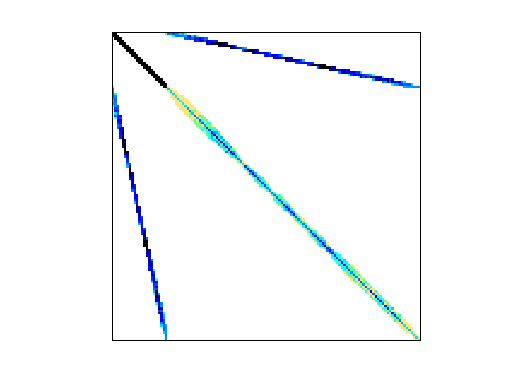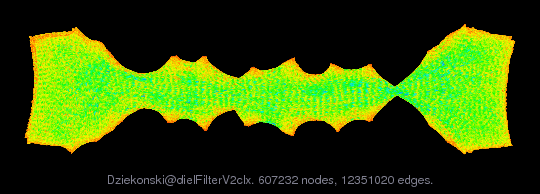High order vector finite element method in electromagnetics
The dielFilter* matrices came from analysis of a 4th-pole
dielectric resonator [4] generated with Finite Element Method.
The tetrahedral mesh of the structure was generated with the
Netgen mesher [2]. The matrices were used as an example in
our paper [3].
dielFilterV2clx - complex symmetric matrix (607,232 x 607,232),
25,309,272 nonzero (real) and 728,900 nonzero (imag) elements.
First 109,108 unknowns correspond to lowest level base
functions.
dielFilterV2real - real symmetric matrix (1,157,456 x 1,157,456)
and 48,538,952 nonzero elements. First 209,432 unknowns
correspond to lowest level base functions.
dielFilterV3clx - complex symmetric matrix (420,408 x 420,408),
32,886,208 nonzero (real) and 3,706,513 (imag) elements. First
24,716 unknowns correspond to lowest level base functions,
next 116,152 unknowns correspond to the second level.
dielFilterV3real - real symmetric matrix (1,102,824 x 1,102,824)
and 89,306,020 nonzero elements. First 66,353 unknowns
correspond to lowest level base functions, next 305,729
unknowns correspond to the second level.
All matrices are sparse and come with right-hand-sides.
[2] J. Schoberl, "NETGEN An advancing front 2D/3D-mesh
generator based on abstract rules," Computing and Visualization
in Science, vol. 1, No. 1, pp. 41-52, July 1997
[3] A. Dziekonski, A. Lamecki, M. Mrozowski, Tuning A
Hybrid GPU-CPU V-cycle Multilevel Preconditioner for Solving
Large Real and Complex Systems of FEM Equations.
[4] F. Alessandri, M. Chiodetti, A. Giugliarelli; D. Maiarelli,
G. Martirano, D. Schmitt, L. Vanni and F. Vitulli. The
electric-field Integral-equation method for the analysis and
design of a class of rectangular cavity filters loaded by
dielectric and metallic cylindrical pucks, Microwave Theory
and Techniques, IEEE Transactions on, vol. 52, no 8, pp.
1790-1797, Aug. 2004.

